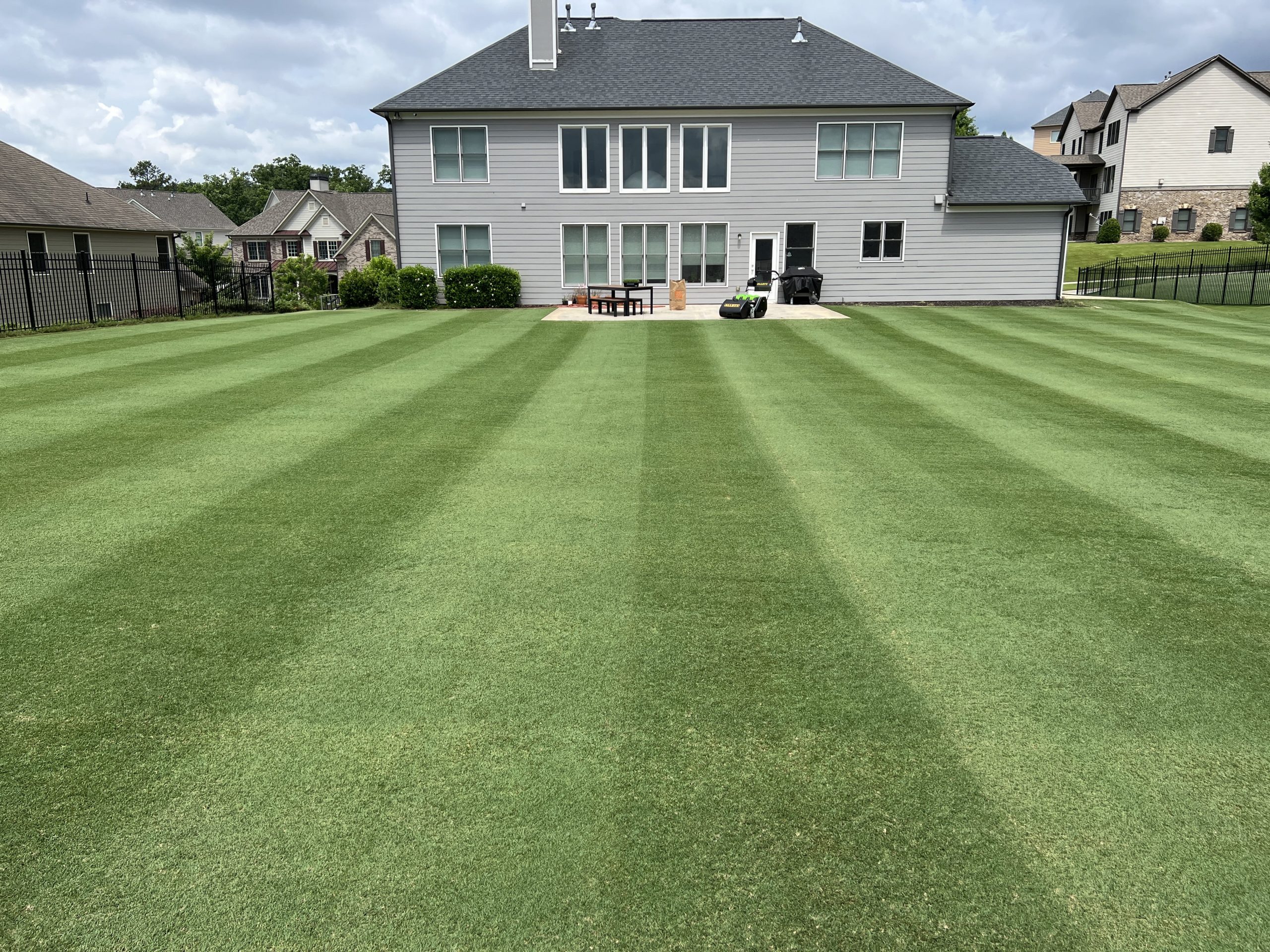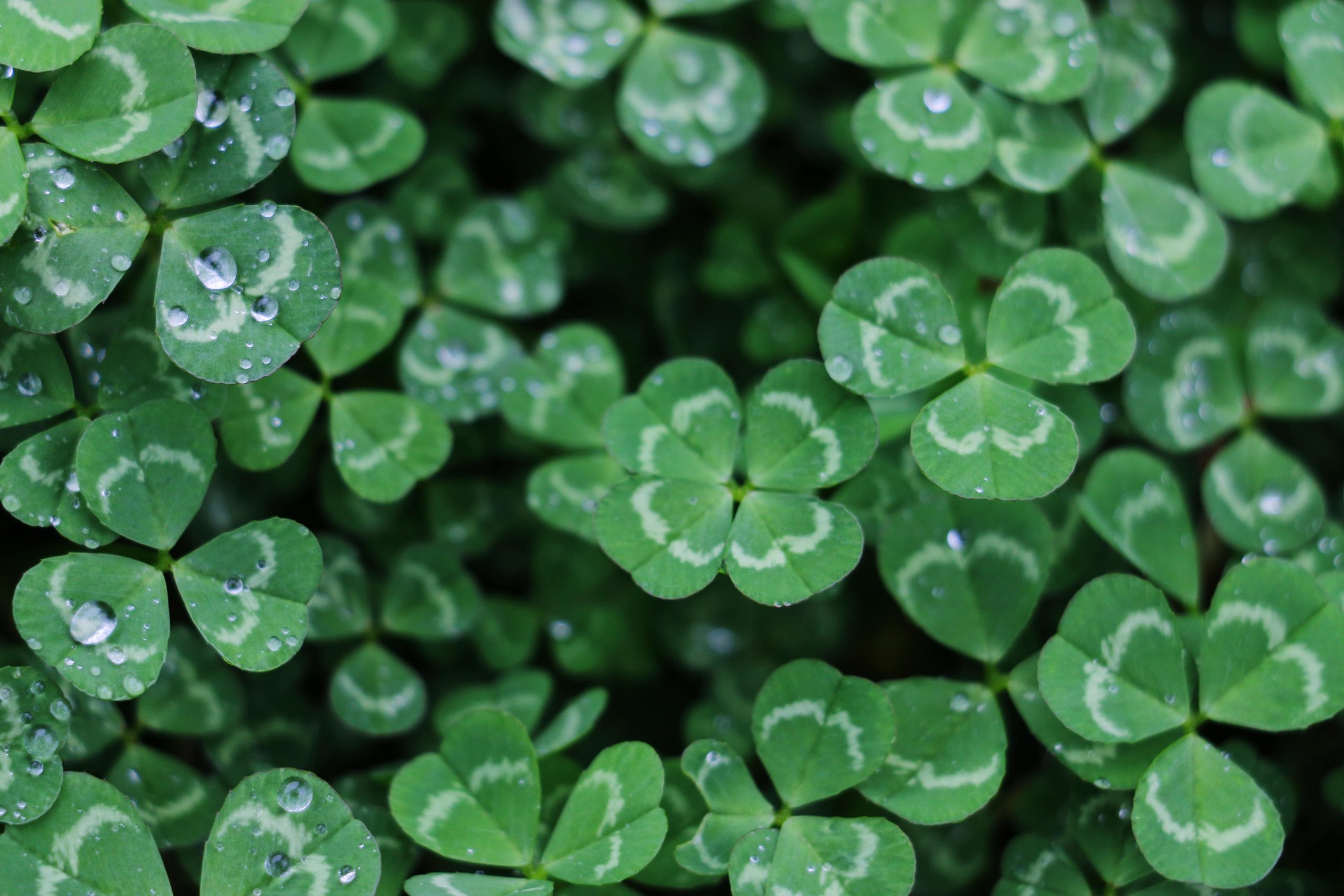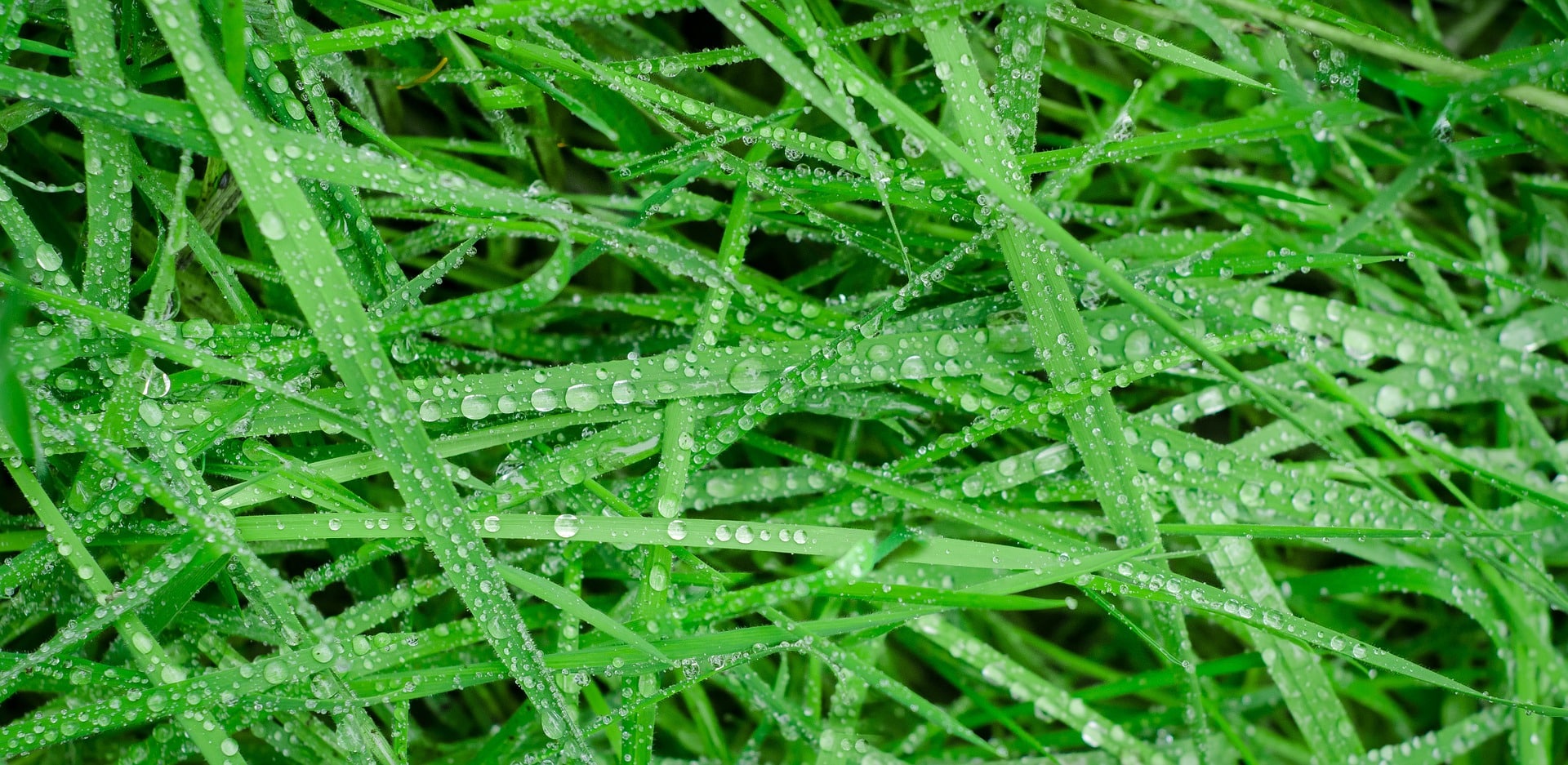Did you know that over 40 million acres of land in the continental US have some form of lawn on it? That’s over three times more than corn or any other irrigated crop. Lawn is the most grown crop in the States — and it’s not even edible.
Lawns in the US usually have a singular grass type, with no weeds at all. Usually, the grass isn’t more than an inch and a half tall with immaculate edges — which comes at a price. A beautiful lawn is a commitment in the States, needing to be mowed, watered, cultivated and maintained regularly.
The goal is to achieve grass as pristine as you’d find on a golf course. This can be an expensive pursuit — and some might regard these kinds of lawns as rather dull compared to UK gardens. But lawns in the US are a status symbol — they represent far more than just a green space. The American lawn is a hallmark of homeownership.
If you’re interested in some of the secrets of American lawn care and how to achieve vibrant, deep-green grass — look no further. We’ve come up with some of the best tips and tricks to get a great lawn — American style. Buckle up, folks!
What’s the Big Deal with Lawns?
It all started across the pond in England, where lawns became fashionable in the 18th Century. Before this, lawns held a very different purpose. The earliest lawns were grasslands surrounding French and British castles — so guards had a clear view of approaching visitors and, more importantly, hostile enemies.
In the 17th Century, lawns emerged around the properties of wealthy landowners for grazing livestock. Lawn upkeep required extensive work, which only the rich could afford the manpower for. From this point onwards, the humble lawn became a symbol of status.

Immigrants from Europe brought the idea of lawn and grass seeds over to America with the same connotations, and only affluent members of society could afford lawn maintenance.
The state of a homeowner’s lawn in the US can still reflect their status within the community. They’re an essential indicator of socio-economic character, translating into modern-world priorities, resale and property value. In addition, lawns represent a significant sociological change in American society: a physical manifestation of the American Dream. Homeownership was top of the list, including a well-manicured lawn. It was and still is a sign to the community that an individual had the time, money and care to look after their grass.
Lawn care is so important in the States that many homeowner associations have regulations on grass maintenance, incurring fines for poor lawn management. So yeah, it’s a pretty big deal over there.
Whether you’re a curious gardening enthusiast or have high ambitions for your lawn, here is some lawn-care advice from our friend and US lawn expert over at Golf Course Lawn Store, Ron Henry. Over to you, Ron!
How to Get a Golf Course Lawn in the US
A beautiful lawn requires time and effort. It’s taken me years of blood, sweat and fertiliser to get my lawn to this point. But, I’ve done all the research and experimenting for you. This guide, combined with a consistent approach, will have your lawn looking like a golf course in just four months.
Topdressing
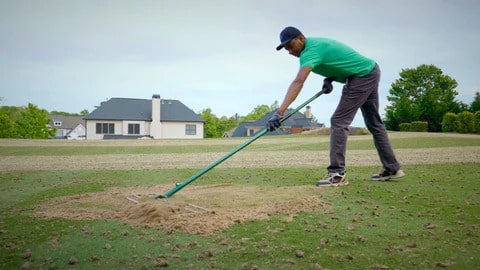
Your lawn might look flat, but there are all sorts of bumps, dips and undulations under the surface — especially after you’ve mowed it short. Topdressing your lawn involves layering the turf with sand to smooth out uneven surfaces.
Topdressing options range from organic material to simple playground sand. My favourite combination is a 70/30 blend of river sand and organic material. Organic material contains natural nutrients and vitamins for your grass to thrive and helps achieve your main goal: levelling the turf.
Apply your topdressing mix to low areas, but be careful not to over-apply. Allow the tips of the grass to remain exposed, so they’re not suffocated and still have access to sunlight to regrow. It’s pretty hard work, so you might want to enlist the help of friends and family.
Ron’s Top Tip: Scalp the turf to a height below half an inch, and remove all grass clippings. Aerate the grass (removing plugs of soil) before adding a starter fertiliser before your topdressing mix.
Lawn Mowers & Mowing
A lawn mower is just for cutting grass, right? Nope. The kind of mower you use greatly impacts the look of your lawn. Most lawns don’t look like golf courses because the wrong kind of mower is being used to cut the grass.
A traditional rotary lawn mower will tear the grass instead of cutting it cleanly. They’re also more difficult to control and are much more likely to scalp the turf and cause damage to your lawn, particularly in uneven areas.
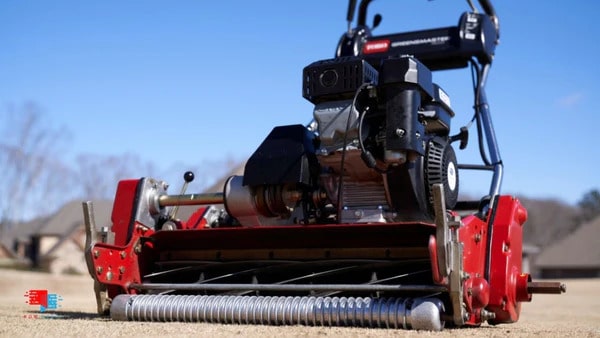
For a golf course lawn, ideal mowing heights are 0.5-1.25”. The best mower is a reel mower (or cylinder mower) which traps the grass between the reel edge and the bed knife, ensuring a clean cut and limited damage.
Mowing frequently is the secret to a smooth, stunning lawn. To achieve this, I recommend mowing at least three times a week, removing no more than ⅓ of the grass’ length.
Fertilisers
Fertilisation is essential for a healthy lawn. Ensure your grass gets the extra nutrients it needs to stay vibrant, dense and strong. Healthy grass is happy grass and will recover faster from harsh weather conditions and be less susceptible to disease. In the States, we have different fertilising products compared to the UK.
But that doesn’t matter. All you need to do is look for fertilisers that contain the holy trinity of grass nutrients: nitrogen, phosphorus and potassium. Over time, soil loses its nutrients, so lawn fertilisers are a must-have to replenish your soil.
Ron’s Top Tip: What goes on beneath your soil greatly impacts the quality of your grass. Using a home soil pH test kit will help you determine if your soil is too acidic or too alkaline — so you can specifically give your lawn any nutrients it might lack.
Watering
The weather is warmer in most parts of the US, so we have different grass types too. In fact, they’re divided into cool season and warm season grasses. My Bermuda grass needs only about an inch of water per week during the summer. You can apply the same rule of thumb in the UK during really hot weather.
During a drought, you might need an irrigation system in place. We use sprinklers and sprayers in the US to limit water costs and efficiently irrigate our lawns.
Weed & Pest Control
Using herbicides and insecticides is a highly effective way of eliminating weeds and pests from your lawn. But, sometimes, they’re just a bit too strong.
If you really need one, I recommend looking for a weed killer that doesn’t kill your grass. The most effective long-term solution for controlling weeds and pests is to have a healthy lawn in the first place. Do everything you can to keep your lawn in top condition and keep your grass in fighting form.
Ron’s Top Tip: Sometimes, no matter what you do, weeds and pests find their way onto your lawn. That’s just mother nature for you! Make sure you properly identify the weed or pest causing you grief before moving on to the appropriate treatment.
The Low-Down
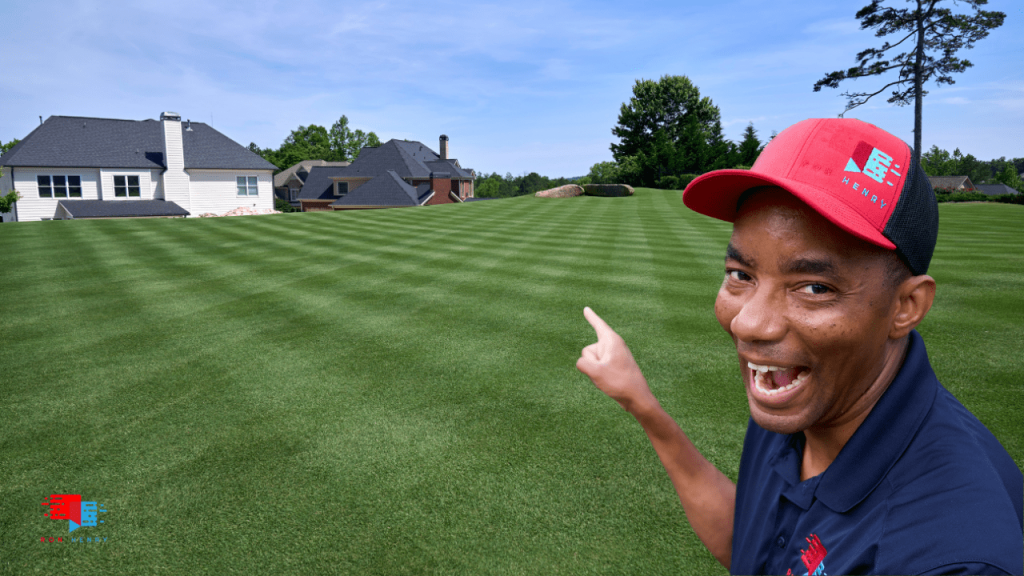
Hopefully, by now, you’ve had a unique insight into American lawn care and some tips on achieving a golf course lawn. But, this is just the tip of the iceberg. Much more goes into pristine lawn maintenance than meets the eye. For free guides and advice about lawn care in the States, head over and subscribe to Ron’s fantastic YouTube channel.

I’m Josh, and I’m the head writer at Lawn Care Pro.
I love everything lawns, but I’m a bit of a lawn mower nerd. I spend a lot of my free time tinkering with mowers, and planning my mowing schedule for the next few weeks.
I’m also into cars, which comes in very helpful when servicing a mower engine!

